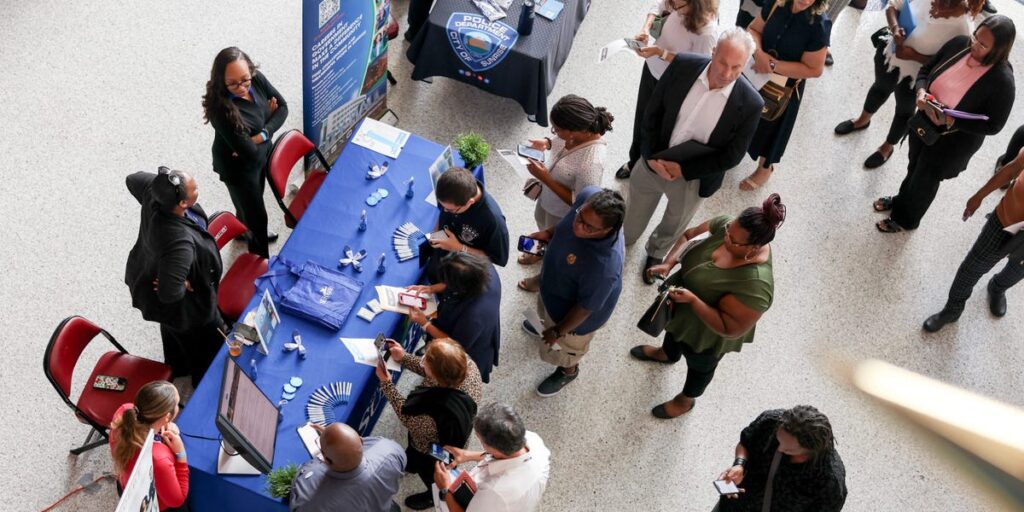The US added 177,000 jobs in April, surpassing the forecast, and unemployment remained at 4.2%.
Economists expected a gain of 138,000 jobs and for unemployment to hold steady. Unemployment has been at least 4% since May 2024.
This follows real gross domestic product shrinking for the first time in three years, sparking fears of a recession. However, some economists think this could be avoided.
“We’re on a path toward a recession, but it is clear what can get us off that path, and that would be less aggressive policies,” Claudia Sahm, chief economist at New Century Advisors, told Business Insider.
Labor force participation increased from 62.5% in March to 62.6%. The employment-to-population ratio rose from 59.9% to 60%.
March’s job growth was revised from 228,000 to 185,000, and February’s gain was revised from 117,000 to 102,000. That means 58,000 fewer jobs.
Stock futures jumped after the strong report.
There are other warning signs beyond the drop in real US GDP. KPMG chief economist Diane Swonk recently told BI that the “deterioration in job security we are seeing is particularly worrisome” and that the “drop in consumer attitudes is in recession territory.”
President Donald Trump announced tariffs on April 2, including higher ones than the 10% base on individual countries. While tariffs could result in some job losses, Trump announced on April 9 a 90-day pause on many of the tariffs announced earlier that month.
“This data is too soon to show the full impacts of the tariffs,” Daniel Zhao, lead economist at Glassdoor, told BI.
It could be a long time before those impacts appear. “Even in the optimistic scenario in which tariffs have the effect of bringing production of some goods back to America, those gains are likely years away,” Kevin Rinz, senior fellow and research advisor at the Washington Center for Equitable Growth, said. “Businesses will face increased costs of imported inputs and decisions about how those costs will affect their operations much more quickly.”
However, new tariffs aren’t the only policy from the Trump administration that will likely affect the job market.
“Large cuts to the federal workforce and the cancellations of many government contracts will also be a drag on payroll growth in coming months while tighter immigration flows will weigh on labor supply dynamics, further constraining job growth,” Lydia Boussour, senior economist at EY, said.
Federal employment fell by 9,000 in April. The Bureau of Labor Statistics said workers on paid leave or getting severance are considered employed.
Healthcare drove overall job growth in April; the sector increased by 50,600 jobs. Employment in transportation and warehousing rose by 29,000. Employment in manufacturing was fairly stable, losing 1,000 jobs after economists expected a 5,000 drop. Employment in retail trade fell by 1,800.
Wage growth was steady. Average hourly earnings increased from $34.75 in April 2024 to $36.06 this past April. That 3.8% increase matches March’s year-over-year increase.
The next scheduled Federal Open Market Committee meeting, where members will decide what to do with interest rates, is less than a week away. CME FedWatch, which estimates the chances of rate moves based on market trades, shows a strong probability the Fed will hold rates steady again. It showed a 97% chance of a hold, slightly higher than before the release of the jobs report.
This is a developing story. Please check back for updates.
Read the full article here


